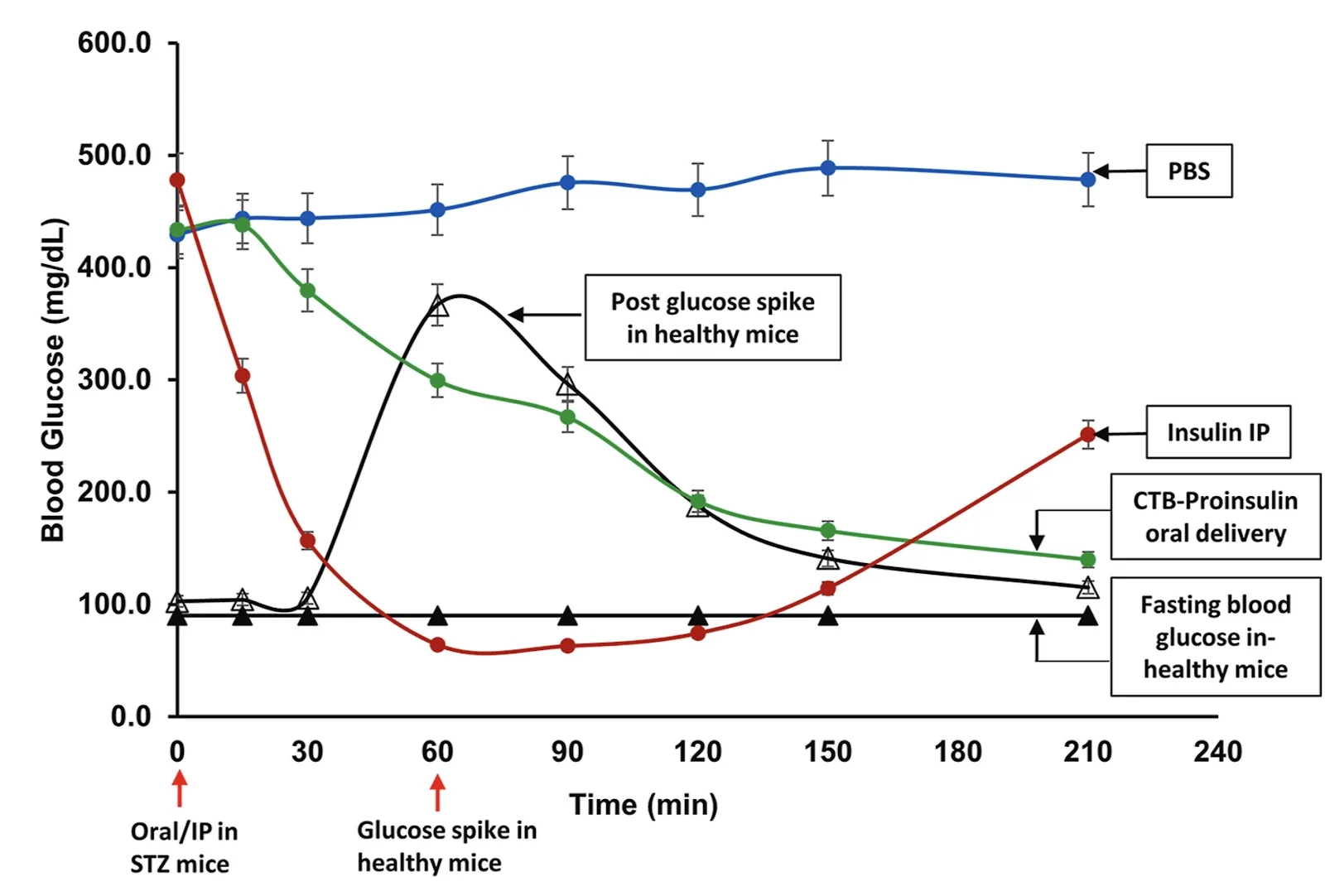Researchers have genetically engineered lettuce to produce human insulin. The resulting plant-based drug, which can be taken orally, was successfully tested in mice [1].
An epidemic and a costly drug
Diabetes mellitus has reached epidemic proportions, affecting about half a billion people worldwide. This debilitating metabolic disease, which also exacerbates numerous processes of aging [2], is rooted in the body’s diminished ability to produce insulin, the hormone that transports the glucose from the bloodstream into the cells, where it is used as an energy source.
Even if they cannot eradicate the disease, insulin injections have saved millions of lives and are considered a major feat of modern medicine. However, producing, transporting, and administering insulin is not easy.
Pharmaceutical insulin production involves putting the human insulin gene in bacteria or yeast, which use the genetic information to produce insulin or its precursors. The insulin is then harvested and purified in an intricate and expensive process. Insulin has to be stored at low temperatures and administered via a syringe, an insulin pen, or a permanent insulin pump. Oral administration is currently unavailable since, being a protein, insulin is quickly broken down by the digestive enzymes in the stomach. All of this lowers insulin accessibility, especially in developing countries.
Lettuce make some insulin!
In this new study, the researchers utilized a novel technology to produce insulin in lettuce, using its cells as tiny factories, just like bacteria and yeast are already being used.
One of the hurdles to overcome was the thick and sturdy wall that encloses plant cells. The researchers used what they call a “gene gun”, literally shooting lettuce chloroplasts with gold-encapsulated genetic material. The cells were then used to breed plants, and the plants turned out to be a sufficiently good source of proinsulin, a precursor that matures into insulin in the body. The researchers intended for the sturdy cell walls, which made it so hard for them to transfect the cells with gene vectors, to protect the insulin from being degraded in the stomach.
After harvesting, freeze-drying, and grinding the genetically modified lettuce, the researchers commenced in vivo experiments in diabetic mice. The plant-produced insulin, delivered orally, worked differently from purified insulin injections, but not necessarily in a bad way. When administered, an insulin shot leads to a rapid drop in blood glucose, often below normal levels. The resulting hypoglycemia can cause health problems [3] and even put patients in comas [4]. On top of that, the body starts to overcompensate by producing glucose, and its levels shoot up again. This was exactly what the researchers observed in mice (red line).

Conversely, the plant-derived insulin (green line) produced a more attenuated decline in blood glucose levels without causing hypoglycemia or a subsequent increase in glucose. Starting from 90 minutes after the administration, the blood glucose trajectory in the study group mostly followed that of healthy controls. The orally administered insulin began to work only after 15 minutes, which is how long it took for the drug to reach the gut. According to the researchers, this means that if their invention makes it to the clinic, lettuce insulin pills will have to be taken 15 minutes before a meal.
Cheaper and better
The researchers employed some serious genetic engineering trickery to ramp up the production of proinsulin in lettuce, bringing it to 48% of the total protein content. This included codon optimization (the same amino acid can be encoded by different codons, and using host-optimized codons increases the protein production) and “borrowing” regulatory sequences from the genes that are highly expressed in chloroplasts.
Interestingly, in the second generation of plants, insulin concentration was even higher. The researchers project that with these plants, the average human-effective dose will be 3.4 grams of dried plant material, to be further improved with subsequent generations. Such a dose would also provide a healthy amount of fiber, which has its own metabolic benefits.
The researchers were able to meet several FDA criteria of drug stability and purity. For example, the drug’s contents remained stable even after a year of storing at ambient temperatures. This is markedly different from injectable pharmaceutical insulin, which has a short shelf life even at low temperatures.
“With this delivery system, we change the whole paradigm, not only for insulin,” explains this paper’s lead author, Henry Daniell of Penn Dental Medicine. “I grew up in a developing country and saw people die because they couldn’t afford drugs or vaccines. For me, affordability and global access to health care are the foundation for my work. And in this case, we are making insulin more affordable while significantly improving it. Patients can get a superior drug at a lower cost.”
Literature
[1] Daniell, H., Singh, R., Mangu, V., Nair, S. K., Wakade, G., & Balashova, N. (2023). Affordable oral proinsulin bioencapsulated in plant cells regulates blood sugar levels similar to natural insulin. Biomaterials, 298, 122142.
[2] Antal, B., McMahon, L. P., Sultan, S. F., Lithen, A., Wexler, D. J., Dickerson, B., … & Mujica-Parodi, L. R. (2022). Type 2 diabetes mellitus accelerates brain aging and cognitive decline: Complementary findings from UK Biobank and meta-analyses. Elife, 11, e73138.
[3] Gregory, J. M., Kraft, G., Scott, M. F., Neal, D. W., Farmer, B., Smith, M. S., … & Cherrington, A. D. (2015). Insulin delivery into the peripheral circulation: a key contributor to hypoglycemia in type 1 diabetes. Diabetes, 64(10), 3439-3451.
[4] Ben-Ami, H., Nagachandran, P., Mendelson, A., & Edoute, Y. (1999). Drug-induced hypoglycemic coma in 102 diabetic patients. Archives of internal medicine, 159(3), 281-284.




